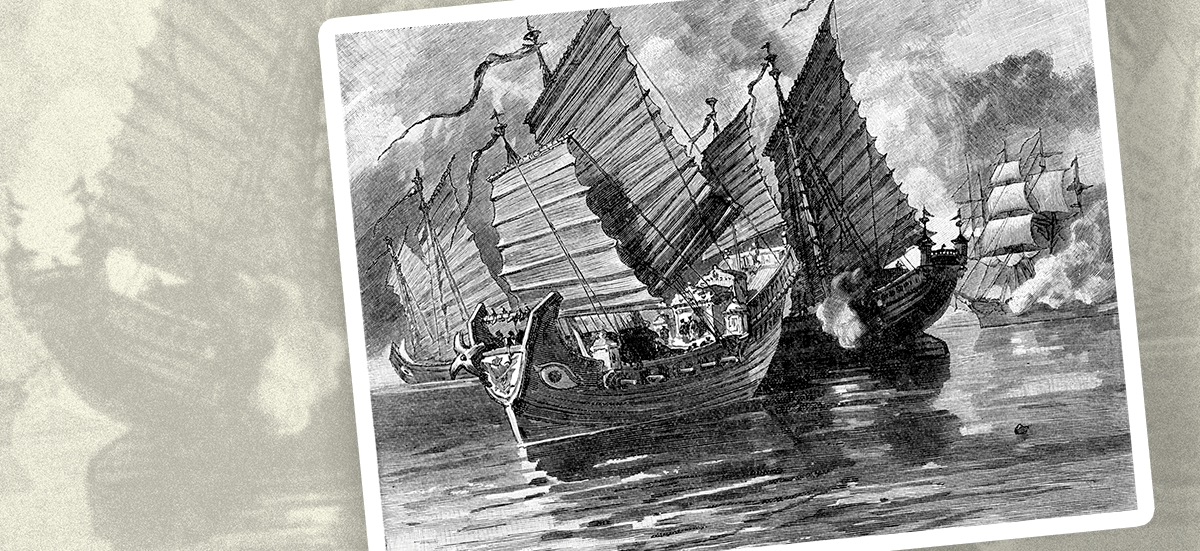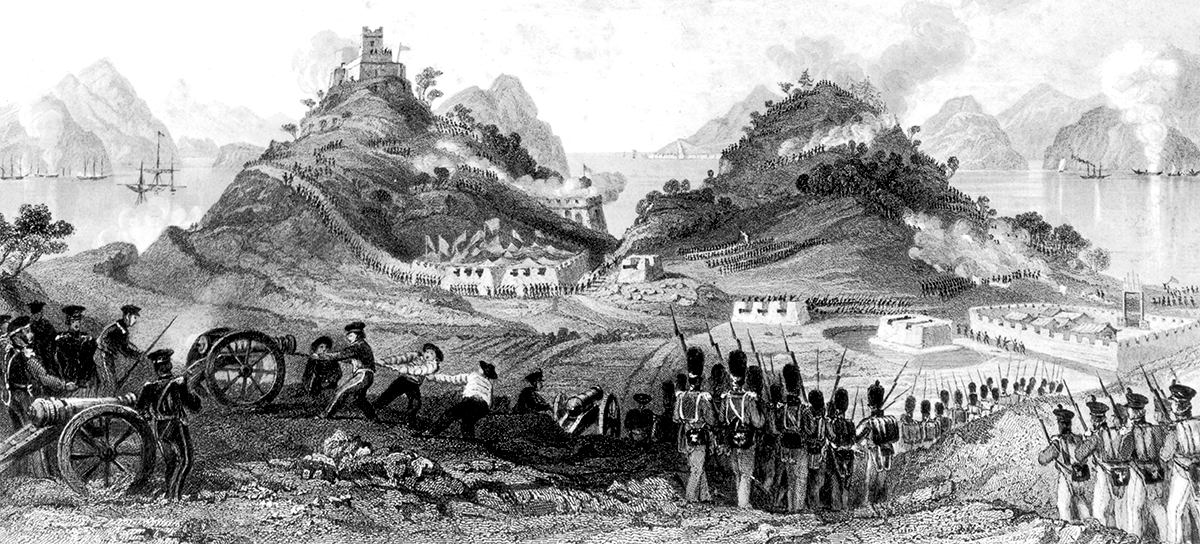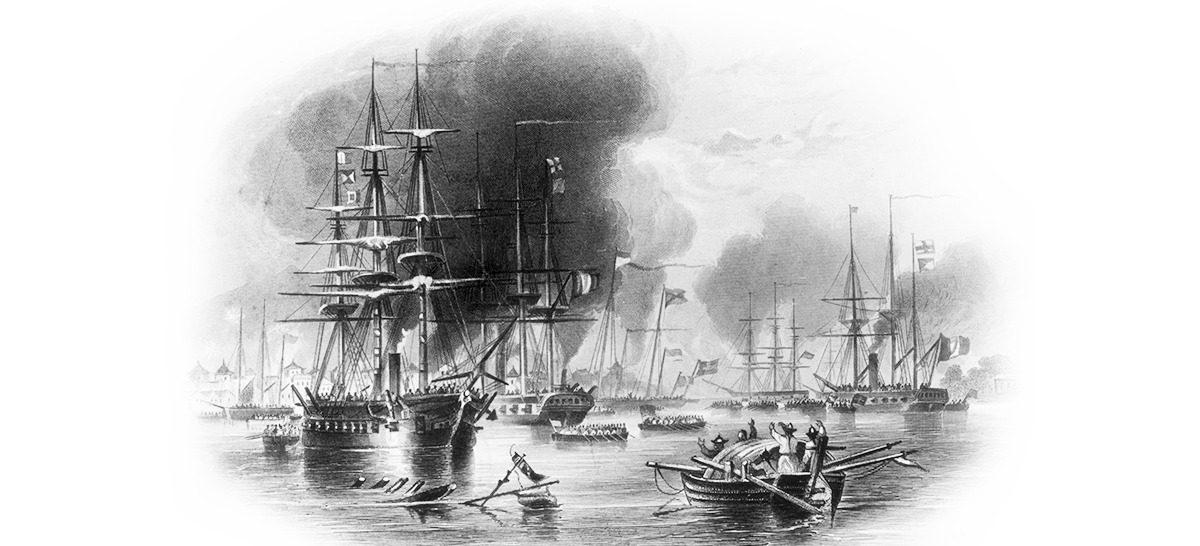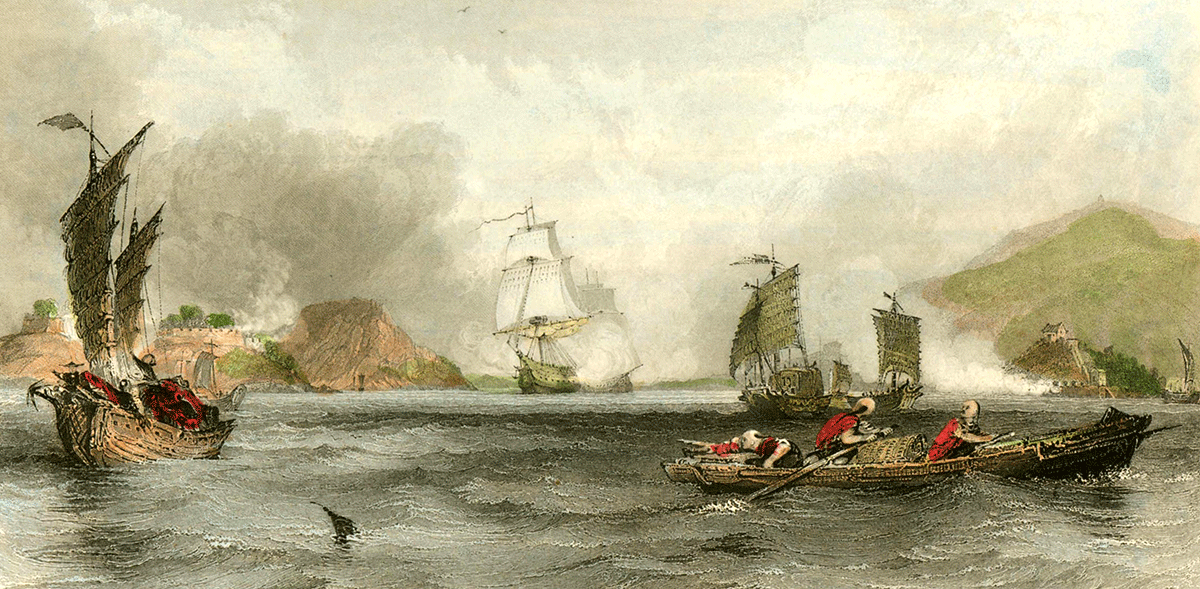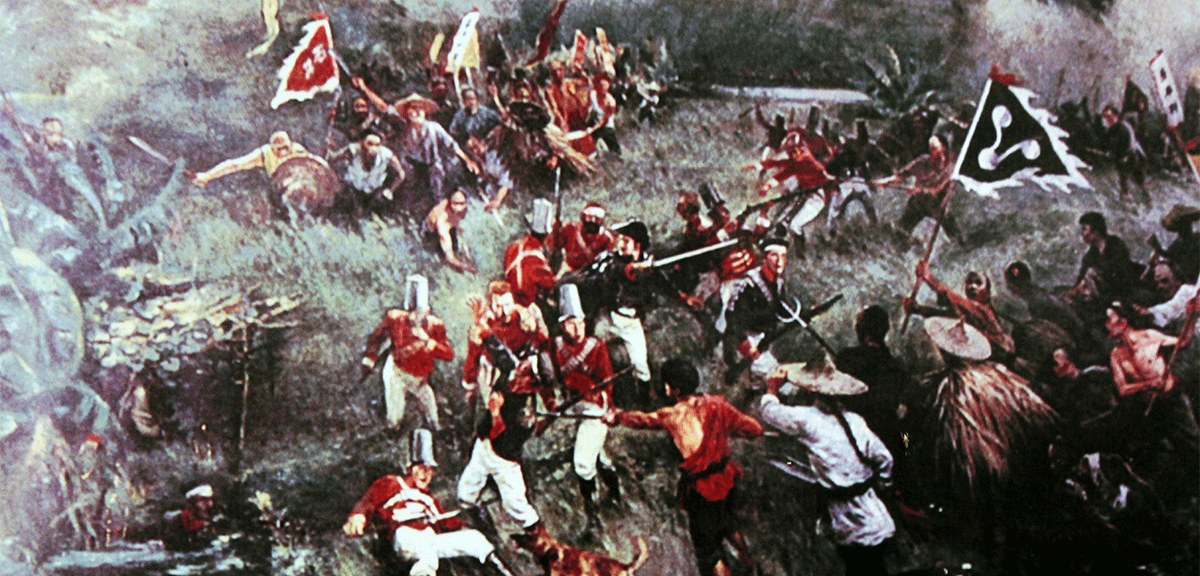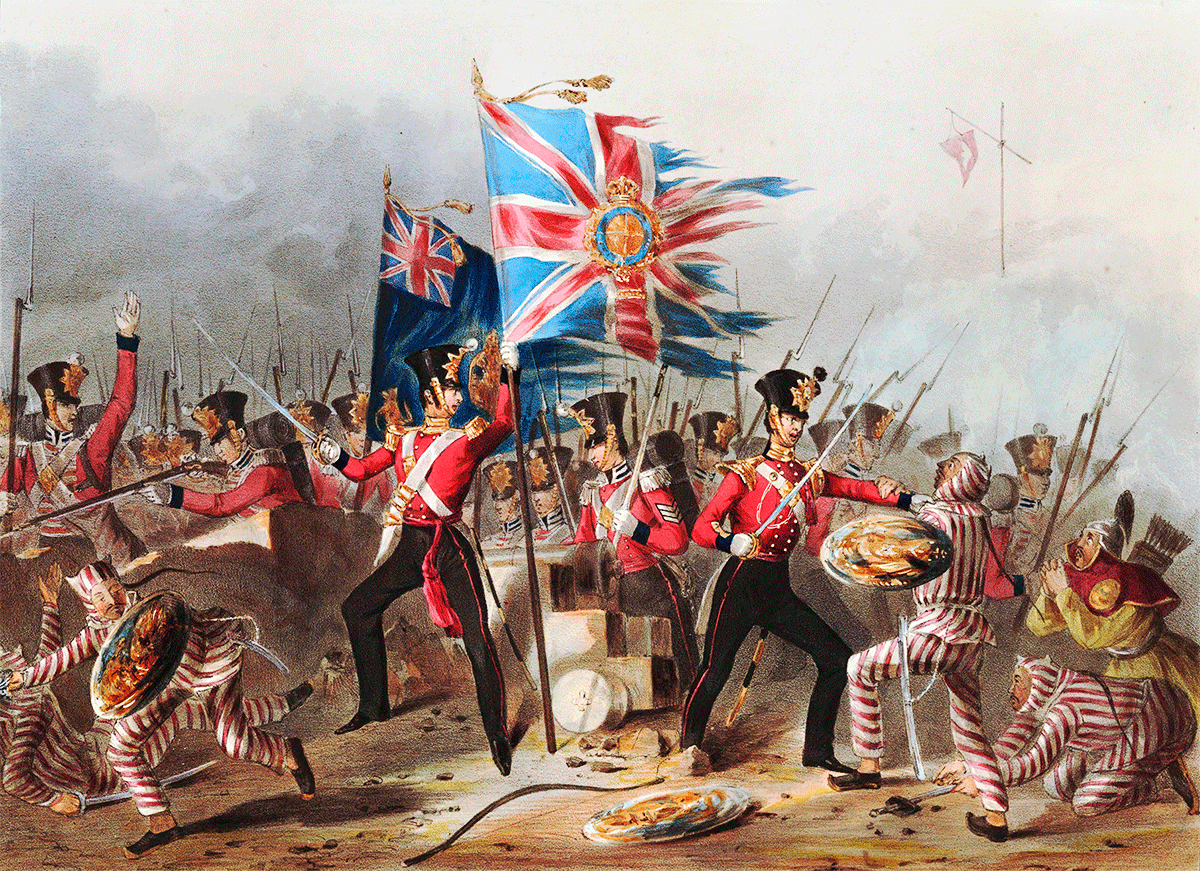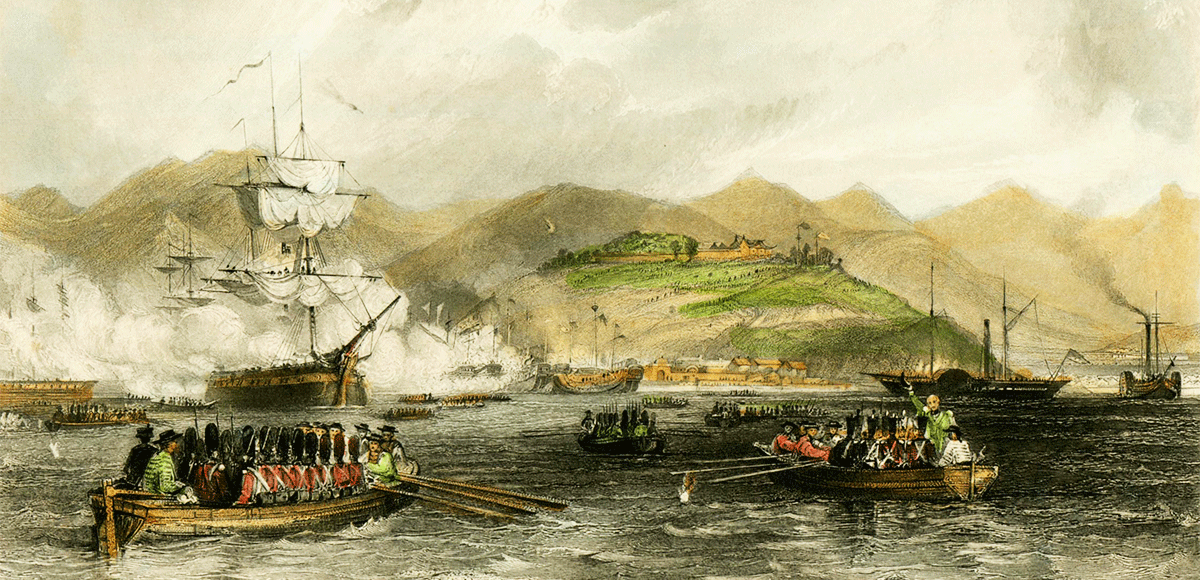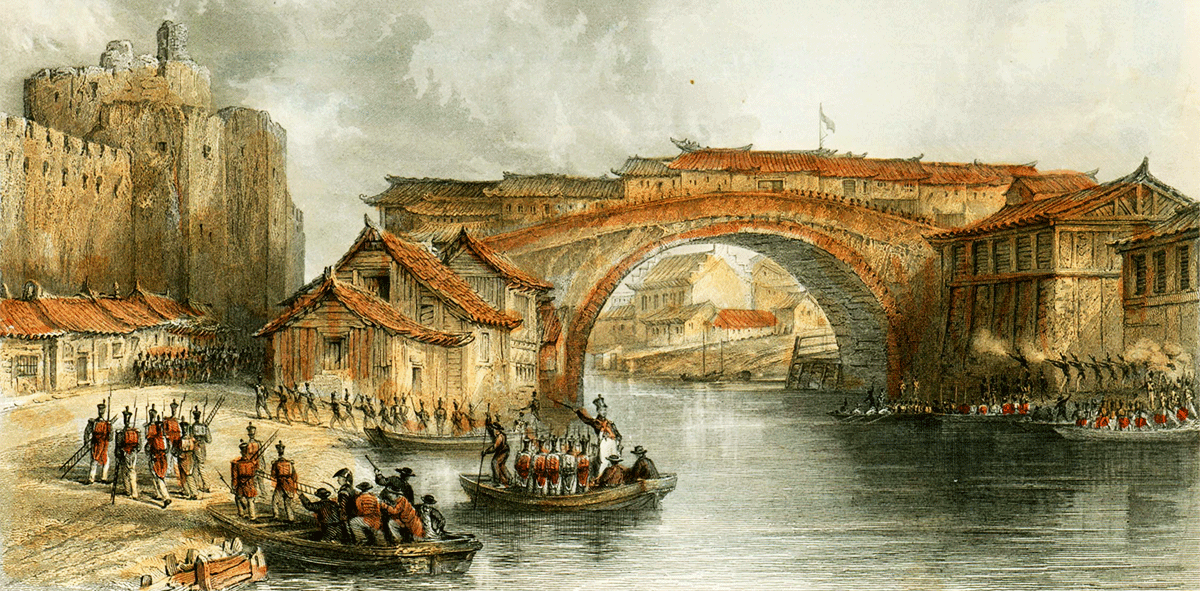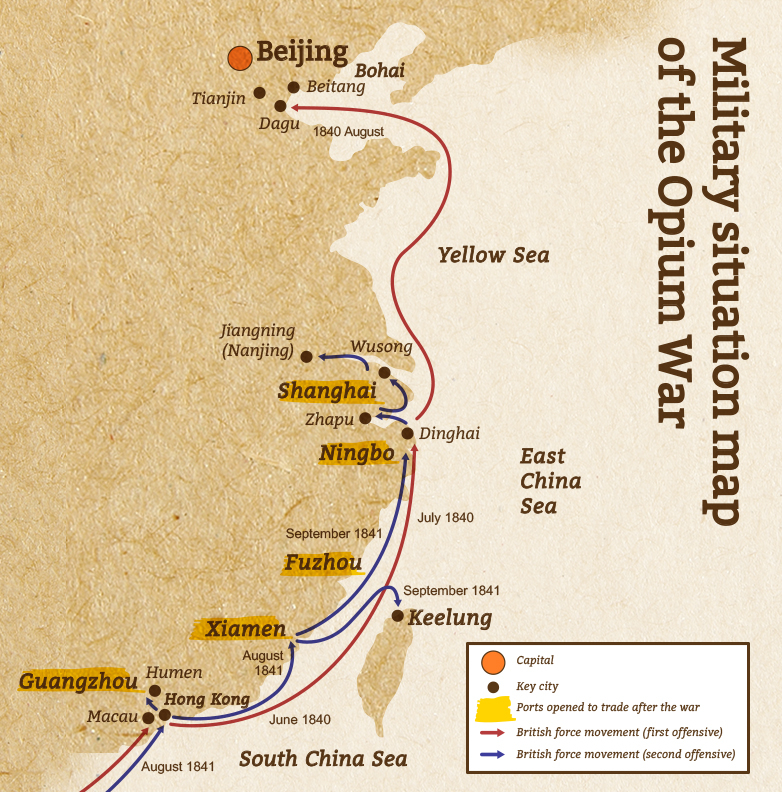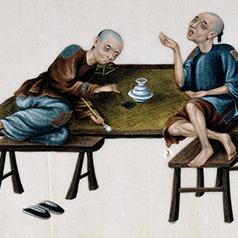The trade dispute between industrialized Britain and ancient China eventually led to the Opium War as a result of continuous Sino-British friction. This included the Humen destruction of opium by Lin Zexu (林則徐) in June 1839, the killing of a Chinese man, Lin Weixi (林維喜), in Kowloon by British sailors in July 1839, and armed conflicts in Chuanbi (穿鼻) and Kowloon in November 1839. Following the appointment of a British naval officer, George Elliot, as Expeditionary Force Commander in February 1840, British forces arrived on June 28 and began a blockade of the Pearl River, leading to the First Opium War.
As the Convention of Chuenpi (穿鼻草約) was rejected in January 1841, British troops began landing at Hong Kong. This was followed by an invasion of Humen (where Chinese admiral Guan Tianpei ﹝關天培﹞was killed). Despite the build-up of civilian defense forces in Sanyuanli near Guangzhou, newly appointed British commander Henry Pottinger captured Xiamen (廈門), Dinghai (定海, where General Ge Yunfei ﹝葛雲飛﹞ and other senior officers were killed), Zhenhai (鎮海), and Ningbo (寧波). In June 1842 British forces attacked Shanghai (上海, where General Chen Huacheng ﹝陳化成﹞ died in battle) and Zhenjiang (鎮江), arriving in Nanjing (南京) in August. Despite being outnumbered by a factor of 10, British troops overwhelmed Qing soldiers with guns, ships and naval strategy, disproving China’s perception of its supremacy.
|
|
Why was China defeated even though it had capable military leaders and more troops than Britain? |
|
|
See answer below. |
Weaponry plays a vital role in any armed conflict. Before the Opium War, Britain had more advanced guns and ships in comparison with China. The picture shows a traditional wooden-hulled Chinese naval vessel set ablaze by cannon fire from British warships, which were superior in terms of speed, durability and range, and equipped with more and better cannons.
In a naval report submitted in November 1839, Lord Palmerston shared the view of those with considerable knowledge on China that a naval force comprising two double-deck capital ships, three cruisers, of which at least one was large-sized, and two or three supply ships would be sufficient to win.
Chinese and British troops had already engaged in firefights in various locations before the Opium War officially broke out. The picture shows the landing of British troops during the Battle of Chuanbi (穿鼻之戰) in November 1839. In February 1840, George Elliot was appointed as Commander-in-Chief of the British fleet in the East Indies and China and tasked with mounting a military expedition to the Orient. He commanded the British force’s operations from July to November 1840, before returning to England due to his failing health.
In June 1840, the British fleet arrived in waters off Guangzhou, blockaded the Zhujiang (Pearl River, 珠江) estuary and opened fire, officially starting the Opium War. In September of the same year, Emperor Daoguang dismissed Lin Zexu for provoking the British with his measures and replaced him with Qishan (琦善). In January 1841, British Plenipotentiary Charles Elliot unilaterally announced the Convention of Chuenpi that he and Qishan had privately drafted. The terms of the convention included the cession of Hong Kong Island and payment of an indemnity. Upon learning of this, Emperor Daoguang dismissed Qishan. The British were also dissatisfied with the convention terms and sought more concessions and prepared to step up their war efforts.
In January 1841, British troops landed in the northwest of Hong Kong Island (modern Sheung Wan), renamed the landing area Possession Point, and unilaterally declared the island a free port. The landing site is at the junction of Possession Street and Hollywood Road in Sheung Wan, Hong Kong today.
In February 1841, the British army attacked Humen and bombarded the Chinese naval vessels and cannon batteries defending the area. Commander-in-Chief of Naval Forces Guan Tianpei was killed after a hard fought battle.
A strong supporter of Lin Zexu’s opium ban, Guan Tianpei helped by increasing efforts to apprehend smugglers and enhancing coastal defences. In February 1841, he fought a vicious battle with the British while defending the Jingyuan Battery at Humen. In the morning of February 26, the British army rained heavy cannon fire on all Humen cannon batteries from their warships and besieged them with ground forces. Guan Tianpei, then in his sixties, led from the frontlines and manned the cannons himself. He died fighting valiantly in the service of his country, holding out even after suffering numerous injuries. The next day his entourage returned to the battlefield and retrieved his badly burned body. The British honored him with a cannon salute.
An oil painting depicting villagers of Sanyuanli (三元里) resisting the British invasion. The British attack on Guangzhou in May 1841 angered civilians in the region, who formed “British quelling brigades” (平英團) on their own. The same month saw more than two hundred British soldiers besieged by several thousand villagers in Sanyuanli (north of Guangzhou City), eventually dispersing only when urged to do so by the local government. This is now known as the Sanyuanli Incident.
In April 1841, Britain rejected the Convention of Chuenpi and recalled Charles Elliot. In his place, they sent Henry Pottinger, who arrived in Macau on August 10 and began leading the troops north on August 21, arriving in Xiamen on August 25 and taking it on August 27. The picture shows the battle between British forces and Xiamen’s defenders.
In September 1841, British troops launched an attack on Dinghai; in the ensuing battle on October 1, Dinghai’s Chinese General Ge Yunfei, charged into the fray with sword drawn and gave his life heroically after receiving over 40 wounds; thus Dinghai fell.
In March 1842, the British forces attacked Ningbo, then advanced to Wusong (吳淞) and Shanghai, where Chen Huacheng, the sixty-six year old commander of the defense forces, held the Wusong cannon batteries for six days and nights before he was killed in action. In July, British troops captured Zhenjiang. The picture shows British troops landing to fight in the Battle of Zhenjiang. Zhenjiang’s fall left Nanjing vulnerable to attack. In the face of total defeat, the Qing government had no choice but to sign a peace treaty with Britain.
Military situation map of the Opium War
|
|
Why was China defeated even though it had capable military leaders and more troops than Britain? |
|
|
During the Opium War, China had more troops than Britain, as well as military leaders, who fought bravely. The Chinese government enjoyed full public support as reflected in the build-up of civilian defense forces in Sanyuanli, Guangzhou but China had significantly less advanced weaponry. This was a sign of the general national decline and increased corruption that had begun at the end of Emperor Qianlong’s reign. Given this, it is no wonder that corrupt and incompetent Qing officials were unprepared and unable to defend China against foreign enemies. |
Source of most photos used in this feature piece: Visual China Group (pictures 1-3, 5-9), misc. photo sources.





